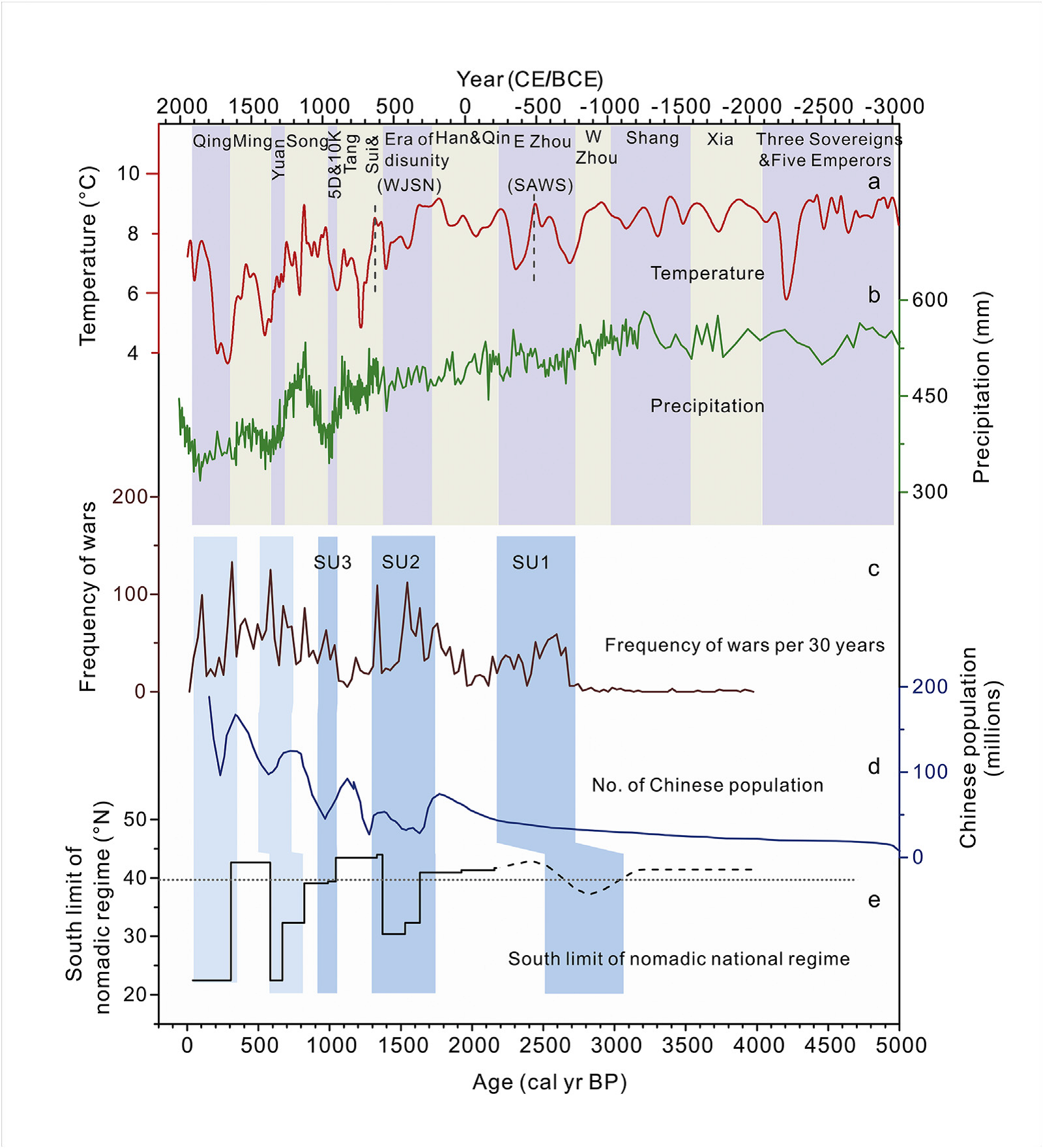Climate changes of northern China during the “5000-year” Chinese History
Font size: Print
The Chinese civilization is the oldest and most enduring in the world. During its long lasting “5000-year” history, China has experienced a series of centennial-scale rise and fall of dynasties, unifications and divisions, war and peace and south-north migration of northern nomads. Climate changes have long been proposed as an important driver of these historical cultural changes through affecting phenology and land productions, especially for China as a traditional farming civilized society.
As early as the 1970s, Chu, (1972) first reported the temperature history of China over the past “5000-year” based on phenological documents and pioneered the study of climate and dynasty transitions. Over the past few decades, many efforts have been taken to reconstruct the climate records, but mostly qualitatively. Lack of high-resolution, quantitative climate records, especially for the heartland of ancient Chinese culture, limits a comprehensive examination of the relation between climate and culture changes in Chinese history.
A scientific research group, composed of Nanjing Institute of Geography and Limnology, Institute of Tibetan Plateau Research, Nanjing University and other institutions, presents well-dated, high resolution, quantitative warm-season temperature and annual mean precipitation records and provides a high-quality climate background for the entire “5000-year” Chinese history. Results suggest that changes in temperature and precipitation are incomplete coupled in terms of both long-term trend and centennial-scale variability before ~1000 CE (Common era). The temperature displays a slight decrease of ~0.5oC before ~200 CE and a rapid cooling of ~4oC afterwards, superimposed with four 1-2oC centennial-scale cold events. The precipitation shows high value before ~1000 BCE and a gradual decrease of ~250 mm with two distinct ~100 mm centennial scale dry intervals after ~1000 CE.
Climate changes in dynastic China indicate that the Three Sovereigns and Five Emperors began in a relatively warm and wet climate, and the moderate conditions lasted until Shang Dynasty followed by a gradually cold and dry climate with large fluctuations afterward. Specifically, we find cold-dry conditions in the late Tang, Five Dynasties and Ten Kingdoms (5D&10K), late Song, Yuan, late Ming Dynasty, and only cold conditions during the period of the Spring and Autumn and Warring States (SAWS), the period of Wei, Jin and Southern and Northern Dynasties (WJSN). It shows the three long-term and large-scale social unrests (5D&10K, SAWS, WJSN) in Chinese history have experienced large climate fluctuations.
Comparison of climate changes and other social factors reveals some centennial-scale cold and/or dry oscillations are also accompanied by an increase of war frequency, a sharp decline of population size and a southward migration of northern nomads during three large-scale social unrests of SAWS, WJSN and 5D&10K, and nomadic dynasties (Yuan and Qing Dynasty) when northern nomads ruled the central plains. Thus, climate fluctuations likely played an important role in affecting cultural changes in the “5000-year” Chinese history.
Dynasty transitions may also be influenced by other sociocultural factors and administrative efficiency such as class struggle, peasant uprising, economic collapses and misgovernment. For example, the end of some dynasties such as Xia, Shang and Qin Dynasty occurred under a background of stable climate, and ~70 years of cold event at ~750 CE did not lead to the end of the prosperous Tang Dynasty although it likely corresponds to the famous An-Shi Rebellion. Climate change may be not a decisive factor of dynastic transitions, although it has an important impact on Chinese historical cultural changes. Therefore, we must avoid falling into the trap of “geographical determinism” when discussing the relation between both. Our high-resolution quantitative climate records just provide crucial climate context to test the hypothesis of climatic impact on historical culture changes.

Quantitatively reconstructed temperature (a) and precipitation (b). Frequency of wars in China (c). Population size of China (d). South limit of nomadic national regime with boundary the GreatWall in Inner Mongolia (e).
Paper link: https://www.sciencedirect.com/science/article/pii/S0277379121000263
